The State of Sound Art Practice in China
| February 22, 2016
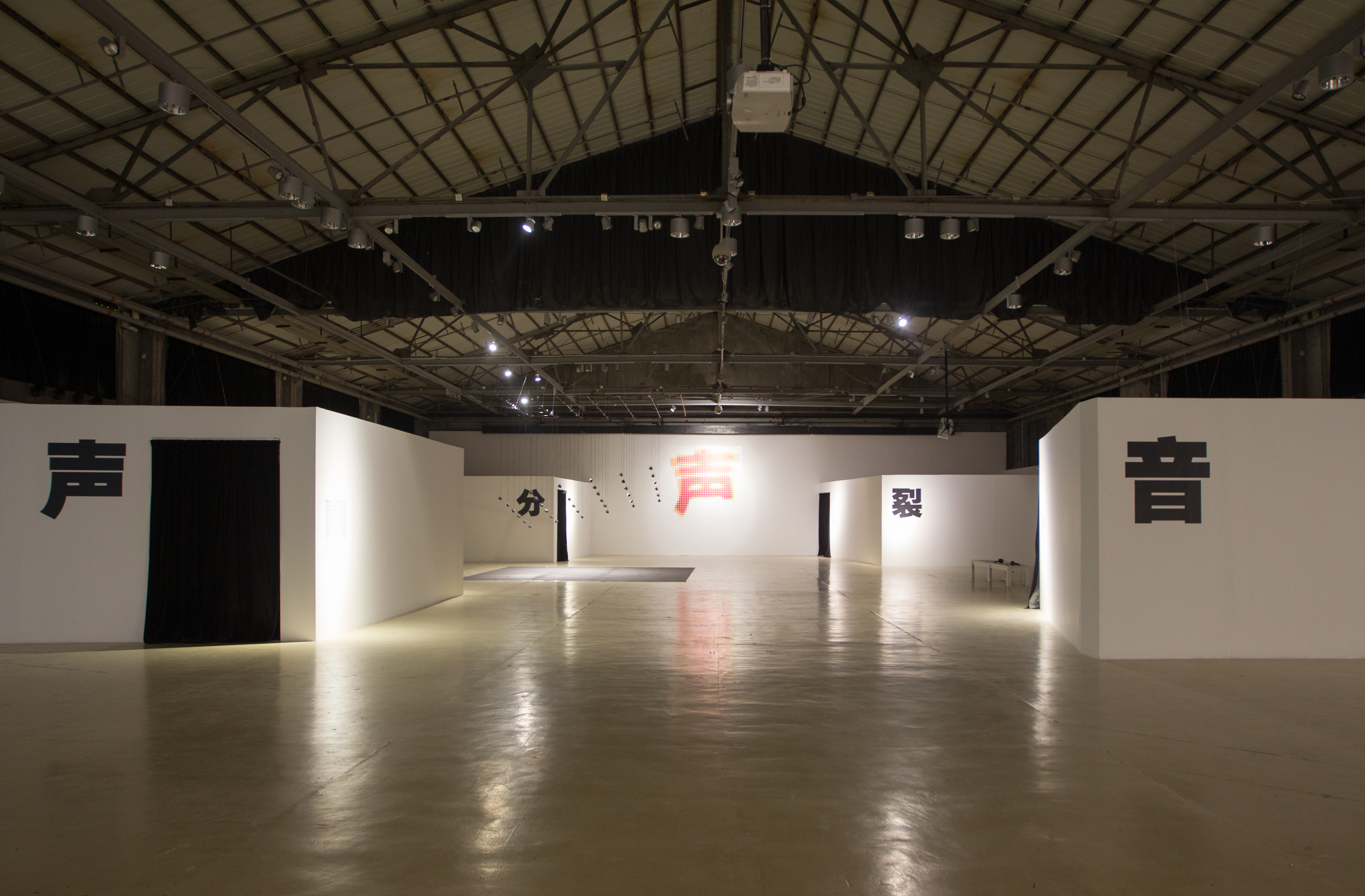
In late 2015, Dajuin Yao brought the “Schizophonia” sound art exhibition to OCAT Shenzhen. The project was a spectacle of sound art in three parts: archival listening, an exhibition of sound installations, and live performance. Though the exhibition did not limit its scope to work by Chinese artists, it did provide the audience with another perspective from which to examine sound practice in China, and to ask if sound art has yet found a strategy to avoid perpetual restart.
Hearing China’s Social Ecology of Media
The sound installation exhibition “Schizophonia: Sonic Alienation” was comprised of eight works, six from China and two from abroad. Aside from Silver Bridge: A Sound Event, Yao’s classic composition as a member of China Sound Group, all of the works are recent, created after 2013. If one pays attention to the gap between the Chinese and western works, it becomes increasingly clear that Chinese sound art is socially reflexive and humanistic in its background, a tradition that continues to be reinforced in this highly networked time.
To a large degree, credit for this difference can be ascribed to Canadian acoustic ecologist R. Murray Schafer, who proposed the concept of “schizophonia” as a critique of the abnormality, distortion, and perversion produced by the electronic revolution. Under his influence, two trends emerged in mainstream sound art since 1970: the first emphasizes nature, while the second explores the materiality of sound. Both share the elimination of the human factor, and the two western installations in this exhibition—pioneer Francisco López’s Hyper-Rainforest and American artist Paul Demarinis’s Jiffy_Pop—are strong confirmations. López overlays a large number of field recordings from rain forests over 20 years in a 5.1-channel surround sound immersive installation. Demarinis hangs foil from a small speaker on the ceiling and a needle from the foil; the sound of the work comes from the electric pulse of the speaker together with the pure, structural, snare-like acoustic shimmers of the needle on the tinfoil. Because the range of motion and pattern of movement of the needle after impact are not controlled, the material has its own sonic life and autonomy.

Compared to the two Western pieces that focus on the nature of sound, Chinese sound art from the past ten or so years (particularly China Sound Group: Zhang Liming of Harbin, Zhong Minjie and Lin Zhiying of Guangzhou, and Sun Wei of Chengdu, among others) has also been keen to make field recordings as well, but here the “field” is not the primitive wilderness but rather the social environment. The artists often take to the streets to record in public spaces, sometimes even listening in on cell phone conversations and directly reaching into private lives. We hear the skeleton of society, of a hidden reality we often neglect.
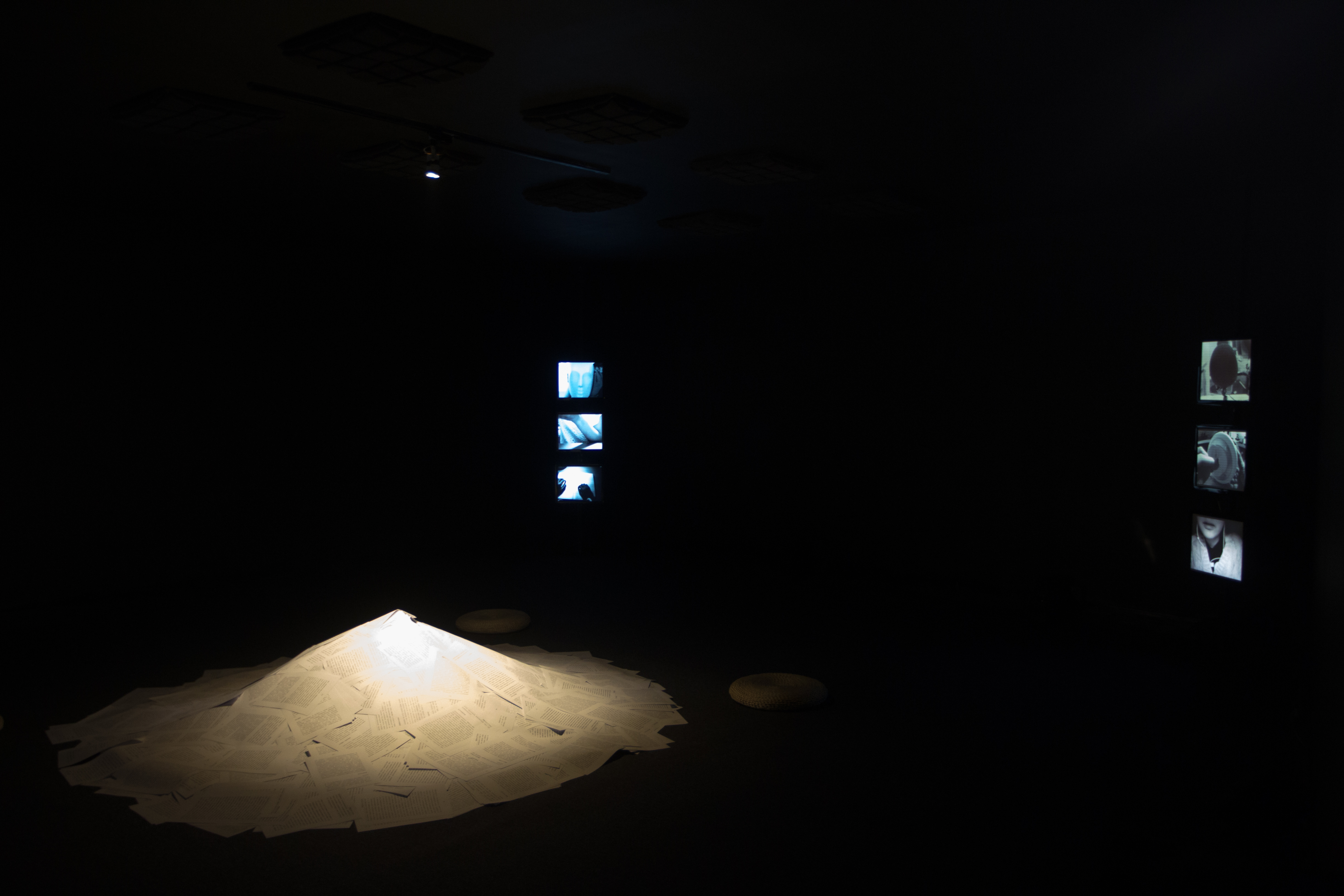
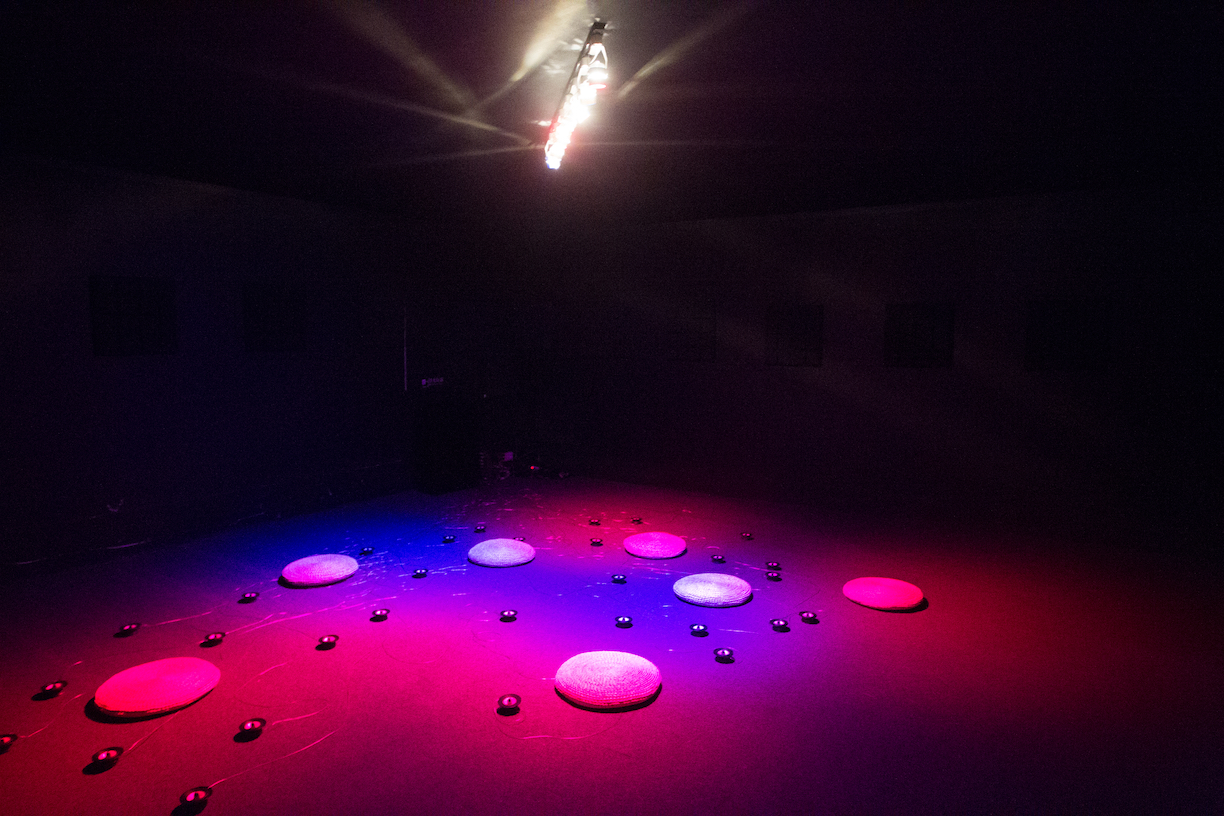
The two installation works in this exhibition also follow this tradition, but the choice of sound material turns from a material dimension to the space of social media—which confirms the universality of social networking in China. In Zafka Zhang’s Ruins of Voices (2015), the artist selects sound bites from Lizhi FM, Ximalaya FM, Same, Acgbeiwo, and other social podcast platforms. Members of these social networks are eager to upload their own voices, regardless of the fact that they may only have a few listeners. Zhang spent two years picking up this vocal debris to reproduce it in a sound theater, realizing the ways in which sound shapes identity. Alternatively, Weng Wei’s work Entertainment Pesticide II collects clips from television programs, broadcasting them over dozens of speakers in the exhibition space. This method of coercive listening exposes the small-minded nature of these media sources, a sharp warning about the influence of noise over ideology. Dajuin Yao and Yan Jun hold that this higher degree of concern with human sounds in China is a specific product of the current domestic social reality.
From Sound Art to Inter-Media Art
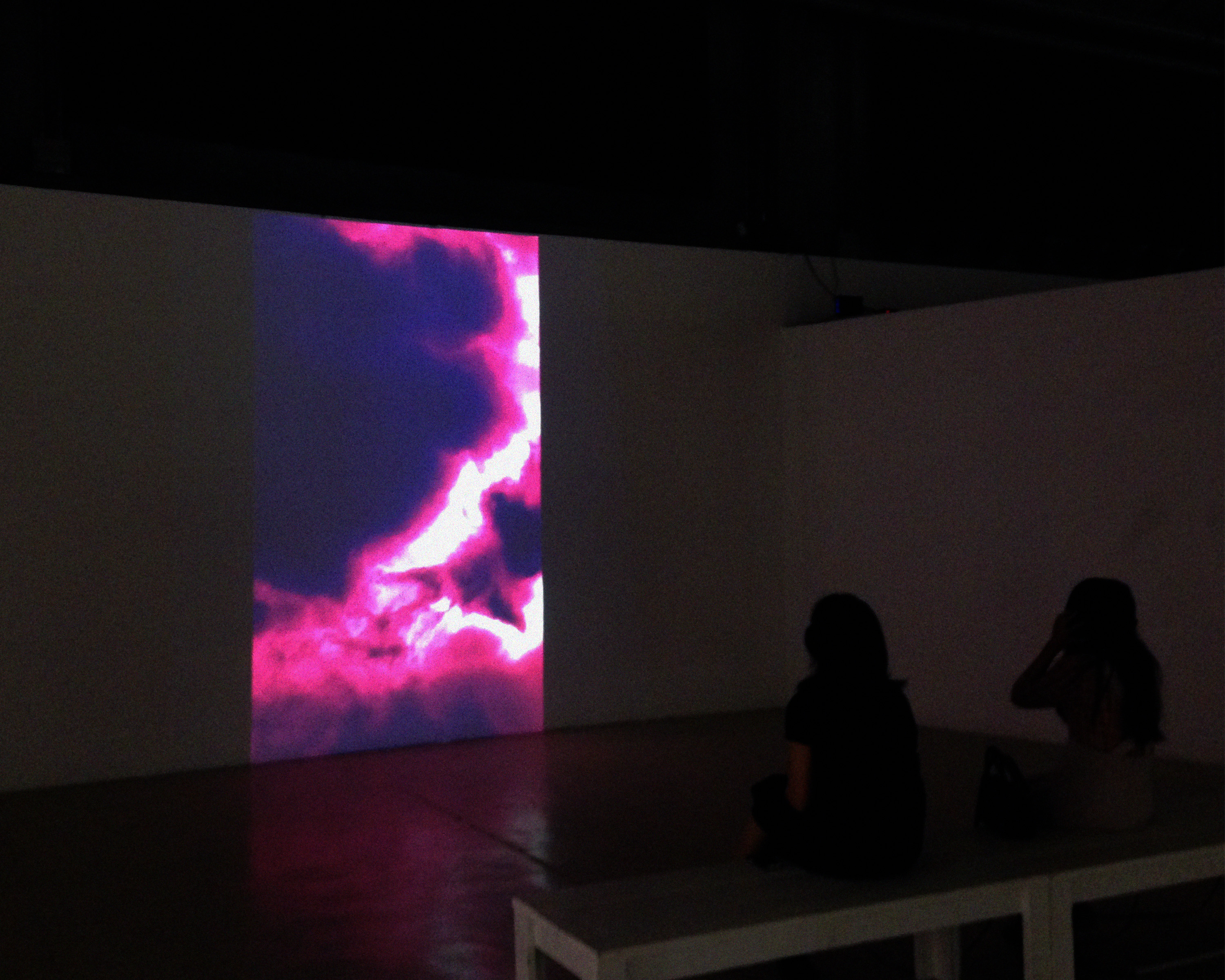
These installations possess rich visual components, an open approach to the use of various media. Wenhua Shi’s Hidden Noises and Hangzhou Sound Unit’s Mutists seem no different from traditional video installations. The relationship between sound and video in Shi Zheng’s Nimbus is vague as well; there is difficulty separating out their functions. How do we tell the essential difference between sound art that happens to be presented as an installation and inter-media art?
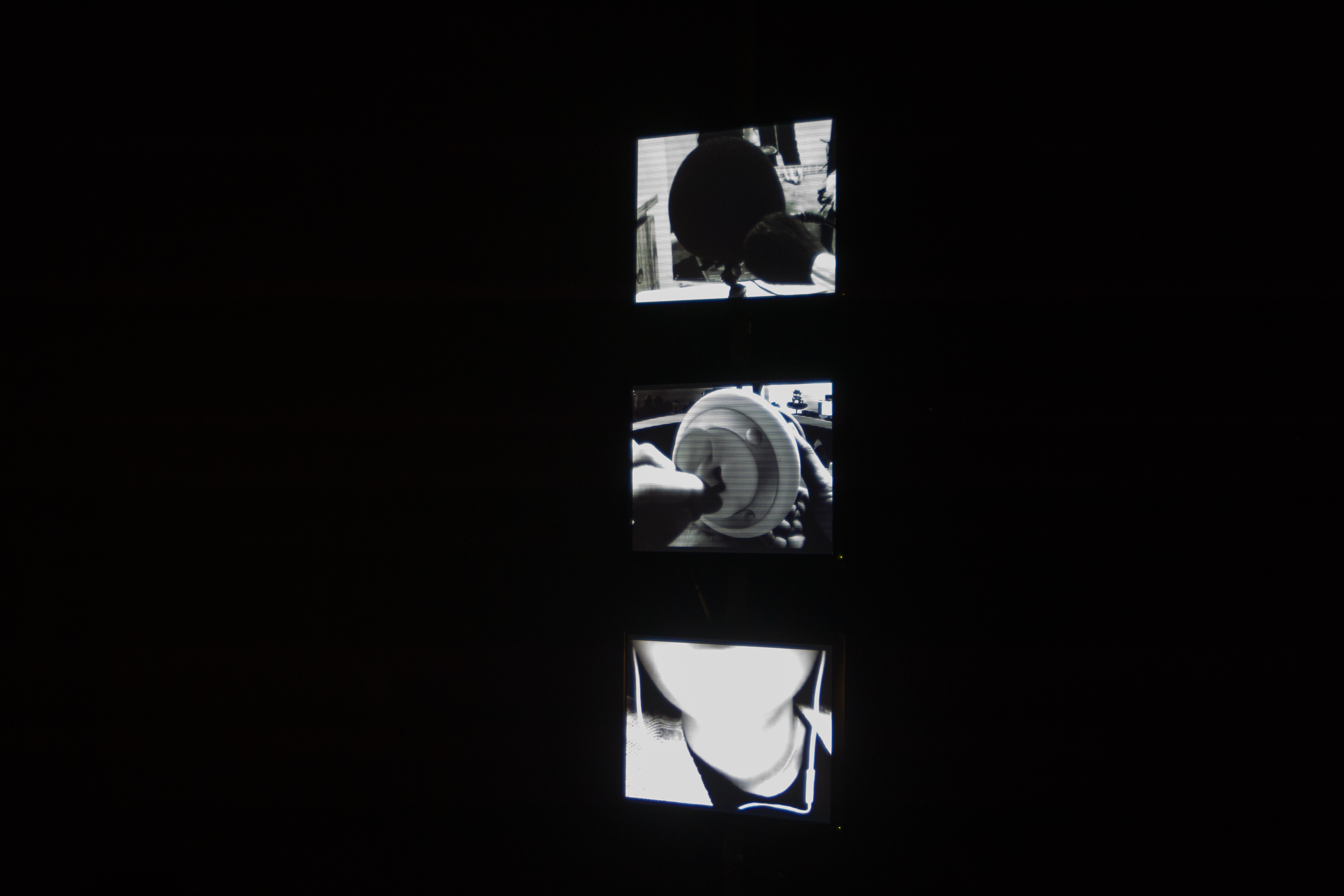
This ambiguity is cleared up in dialogue between Dajuin Yao and the participating artists. Installations here resembled cross-media work, but they begin with a primary attention to sound and a sincere exploration of listening as a sensory experience. In the black-box theater of Ruins of Voices, Zafka Zhang prints out podcast transcripts, piling them up into a tomb-like mound at the center of the gallery. The result is visual pathos up against an aural impression of fresh, living voices. This juxtaposition cuts to the core of listening as an experience—its movement, its emotion, its vitality.
The Chinese contemporary art system is, for the most part, under the hegemony of the visual, and sound art is a fringe phenomenon. It is a rare opportunity for sound art to enter an exhibition space like this is, a chance offered on the condition that the work possess a strong visual appeal. Taiwanese sound artist Lin Chiwei, in his book Beyond Sound Art, discusses the incorporation of sound art into institutions like museums. Some sound artists fear that their discipline is prone to compromising itself and yielding to the visual.
But sound is not a delicate veil, and listening does not require shutting one’s eyes and avoiding all sensory input. Dajuin Yao, as Chair of the Department of Open Media at the China Academy of Art, is perhaps the least worried about this trend. Just as a recklessness with regard to freedom can often engulf freedom itself, if art is too persistently categorized and defined it can become blind to its creative intent. Yao, perhaps, envisions the loss of the original appearance of sound art in order to return it to its proper mission: touching the audience with the experience of deep listening. (Translated by Katy Pinke)


